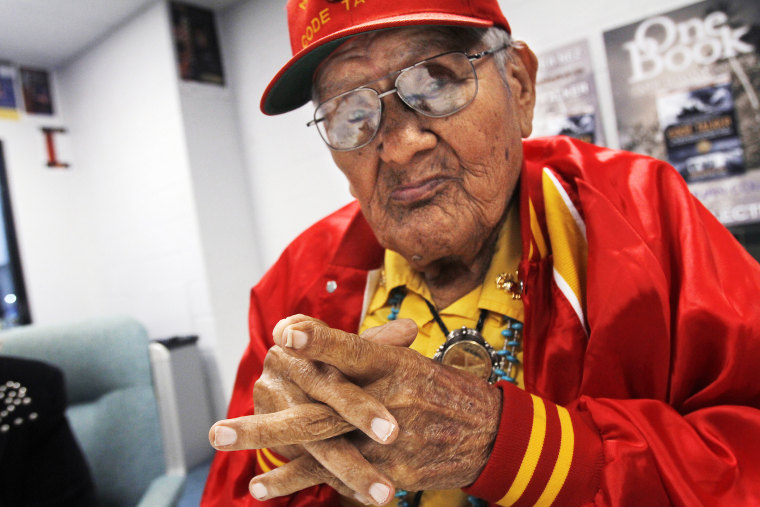Chester Nez, the last surviving original Navajo Code Talker, died Wednesday morning, according to Judith Avila who helped Nez write his memoir. The cause of his death is said to be kidney failure. Nez was 93.
Nez was one of 29 members of the Navajo Nation who helped create the code used by the American military in World War II -- a code that Japanese soldiers were never able to break during the conflict.
The Marines would later recruit more than 500 members of the Navajo Nation by 1945, and as many as 420 were trained to be Code Talkers. The Navajo Code Talkers participated in every assault launched by the Marines in the Pacific between 1942 and 1945. The Navajo Marines served in all six Marine divisions, Marine Raider battalions, and parachute units.
After recruitment, Nez and the other 28 original Code Talkers were first sent through boot camp. Then, in May of 1942 at Camp Pendleton, the 29 men created the unbreakable code.
According to the Navy, when a Navajo Code Talker received a message by radio or telephone, all that could be heard was a string of unrelated Navajo words. The Code Talkers would then translate that string of words into English. In some instances, the first letter of each English word would stand for that particular letter of the English alphabet. Or, as the Navy's history site explains:
... the Navajo words "wol-la-chee" (ant), "be-la-sana" (apple) and "tse-nill" (axe) all stood for the letter "a." One way to say the word "Navy" in Navajo code would be "tsah (needle) wol-la-chee (ant) ah-keh-di- glini (victor) tsah-ah-dzoh (yucca)."
Other Navajo words represented particular English-language military terms. The Department of Archives explains that type of translation this way:
For example, "fighter plane" was called "da-ha-tih-hi," which means "humming bird" in Navajo, and "dive bomber" was called "gini," which means "chicken hawk."
Chester Nez spoke to Stars and Stripes in November, telling the newspaper, "I was very proud to say that the Japanese did everything in their power to break that code but they never did.”
Nez also said that he grew up during a time of difficult relations between the U.S. government and the Navajo Nation. He told Stars and Stripes that children were often removed from reservations, put into boarding schools, and prohibited from even speaking the Navajo language. Like so many others, Nez was recruited from one of those schools. The unmistakable irony, of course, is that it was the very prohibited language that proved to be an invaluable tool for the Pentagon in World War II's Pacific theater.
Nez told the Associated Press in 2010 that he kept his decision to enlist a secret from his family and actually had to lie about his age to meet enlistment requirements. After World War II, Nez went on to volunteer his service during the Korean War for two years. He retired in 1974 after working as a painter for 25 years at a VA hospital in Albuquerque, N.M., according to the Associated Press.
Because of its success and possible future use, the code and the Code Talkers' mission remained classified until 1968. Nez and the other original Code Talkers all received Congressional Gold Medals in 2001. The medals were presented by then-Pres. George W. Bush who praised the Code Talkers as men "who, in a desperate hour, gave their country a service only they could give."
